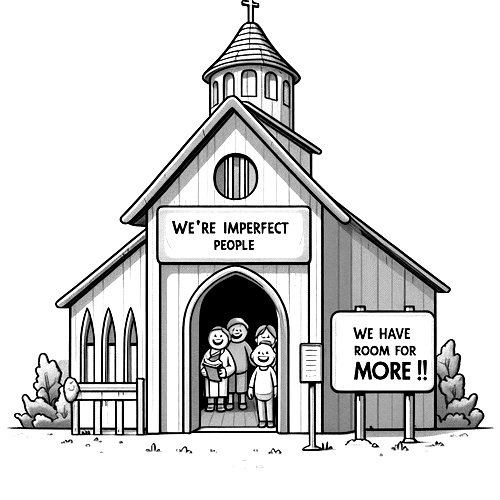Does the Bible Say the Earth is Flat?
In recent years, flat earth theories have gained surprising traction, with some proponents even claiming biblical support for their views. As Christians committed to the authority and proper interpretation of Scripture, we must ask: Does the Bible say the earth is flat? The answer is a clear no—but understanding why requires careful attention to how we read God’s Word.
UNDERSTANDING HOW THE BIBLE SPEAKS
The Bible wasn’t written as a modern science textbook. Instead, it uses the language of human experience and observation. When Scripture speaks of the sun “rising” or “setting,” it’s using phenomenological language—describing things as they appear to us, just as we do today despite knowing the earth rotates around the sun.
This observational language serves the Bible’s primary purpose: revealing spiritual truth about God, humanity, and salvation. The Holy Spirit inspired the biblical authors to communicate divine truth in ways their original audiences could understand, without requiring them to have modern scientific knowledge.
DOES THE BIBLE SAY THE EARTH IS FLAT? WHAT THE KEY PASSAGES ACTUALLY SAY
Let’s examine the main texts flat earth advocates cite:
Isaiah 40:22: “The Circle of the Earth” “It is he who sits above the circle of the earth, and its inhabitants are like grasshoppers; who stretches out the heavens like a curtain, and spreads them like a tent to dwell in.”
The Hebrew word “chug” (circle) can refer to a sphere or circular shape. More importantly, this passage emphasises God’s transcendence over creation, not earth’s geometry. The focus is theological: our sovereign God rules over all creation from his heavenly throne.
Job 26:7: Suspended in Space “He stretches out the north over the void and hangs the earth on nothing.”
This remarkable passage actually contradicts flat earth models. Job describes the earth as suspended freely in space—a concept that aligns far better with modern astronomy than with ancient flat earth cosmologies that required pillars or supports.
Daniel 4:10-11: The Great Tree Vision Flat earth advocates point to this vision of a tree visible “to the end of all the earth.” However, this is clearly apocalyptic symbolism within Nebuchadnezzar’s prophetic dream, not a literal description of earth’s geography. The tree represents the king’s vast empire, not actual cosmology.
Revelation 7:1: “Four Corners” The “four corners of the earth” refers to the four cardinal directions (north, south, east, west), not literal corners. This directional language appears throughout Scripture and remains common in modern speech.
PRINCIPLES FOR BIBLE INTERPRETATION
The Reformed tradition has always emphasised careful biblical interpretation guided by key principles:
- Scripture Interprets Scripture: We understand unclear passages in light of clearer ones. When Job clearly describes the earth hanging in space, we don’t force other poetic passages to contradict this clear teaching.
- Author’s Intent: We seek to understand what the human authors intended to communicate to their original audiences, recognizing their cultural and linguistic context.
- The Analogy of Faith: We interpret individual passages in harmony with Scripture’s central message of salvation through Christ.
CALVIN’S WISDOM ON SCRIPTURE AND SCIENCE
John Calvin understood God accommodates His revelation to human capacity. In his commentary on Genesis, Calvin noted that Moses “wrote in a popular style things which, without instruction, all ordinary persons endued with common sense are able to understand.”
This doesn’t diminish Scripture’s authority—it recognises how God graciously communicates truth. The Westminster Confession affirms that Scripture is sufficient for “faith and practice,” while acknowledging that God reveals himself through both his written Word and the natural world.
ADDRESSING THE “FIRMAMENT” QUESTION
Genesis describes God creating a “firmament” (Hebrew: raqia) to separate waters. Some interpret this as a solid dome, but careful study reveals raqia refers to an expanse or space—what we call the atmosphere and beyond. The ancient imagery serves to communicate God’s ordering of creation without endorsing specific cosmological models.
DOES THE BIBLE SAY THE EARTH IS FLAT? THE REFORMED CONFIDENCE
When properly understood, Scripture and nature both reveal God’s glory.
Rather than forcing the Bible to address every scientific question, we celebrate its true purpose: revealing God’s plan of salvation through Jesus Christ. The earth’s shape—while scientifically fascinating—pales in comparison to the earth-shaking truth that God became man to redeem his people.
DOES THE BIBLE SAY THE EARTH IS FLAT? RELATED FAQs
Did any early church fathers believe in a flat earth? Most early church fathers actually accepted the spherical earth, following classical Greek knowledge. Church leaders like Augustine, Basil the Great, and John Chrysostom all understood the earth as round. The medieval “flat earth myth” was largely invented by 19th-century writers seeking to portray the church as anti-science.
- What about the “ends of the earth” passages in Scripture? Biblical references to earth’s “ends” use idiomatic language meaning “farthest reaches” or “remotest places,” not literal edges. Even today we speak of “the ends of the earth” while knowing the planet is spherical. These passages emphasise God’s universal sovereignty over all creation, not geography.
- How do we reconcile Genesis 1 with modern cosmology? Genesis 1 presents a theological account of creation’s purpose and order rather than a scientific chronology. The text emphasizes God as Creator and the goodness of creation, using framework language that ancient readers could understand. Modern cosmology reveals how God accomplished his creative work.
- Why does the Bible mention pillars of the earth if it’s not flat? The “pillars of the earth” in passages like 1 Samuel 2:8 represent poetic imagery for God’s sovereign control over creation’s stability. This metaphorical language appears in praise songs and prayers, not geographical descriptions. Even flat earth models in ancient times didn’t always include literal pillars.
- What about Jesus seeing “all the kingdoms of the world” from a high mountain? Matthew 4:8 and Luke 4:5 describe Satan’s temptation of Christ, which could involve supernatural vision rather than natural sight. Alternatively, “all the kingdoms” might refer to representative kingdoms of the known world. Temptation accounts often include supernatural elements that transcend normal physical limitations.
Does believing in a round earth compromise biblical inerrancy? Absolutely not. Biblical inerrancy means Scripture is truthful in all it affirms, but it doesn’t require the Bible to address every scientific question. Recognizing that Scripture uses observational language and focuses on spiritual truth actually upholds inerrancy by interpreting the text according to its intended purpose and genre.
DOES THE BIBLE SAY THE EARTH IS FLAT? OUR RELATED POSTS
Editor's Pick

Self-Authentication: Why Scripture Doesn’t Need External Validation
"How can the Bible prove itself? Isn't that circular reasoning?" This objection echoes through university classrooms, coffee shop discussions, and [...]

Do Christians Need Holy Shrines? Why the Reformed Answer Is No
Walk into a medieval cathedral and you'll encounter ornate shrines, gilded reliquaries, and designated "holy places" where pilgrims gather to [...]

I Want To Believe, But Can’t: What Do I Do?
"I want to believe in God. I really do. But I just can't seem to make it happen. I've tried [...]

BC 1446 or 1250: When Did the Exodus Really Happen?
WHY REFORMED SCHOLARS SUPPORT THE EARLY DATE Many a critic makes the claim: “Archaeology has disproven the biblical account [...]

Does God Know the Future? All of It, Perfectly?
Think about this: our prayers tell on us. Every time we ask God for something, we’re confessing—often without realising it—what [...]

Can Christian Couples Choose Permanent Birth Control?
Consider Sarah, whose fourth pregnancy nearly killed her due to severe pre-eclampsia, leaving her hospitalised for months. Or David and [...]

Bone of My Bones: Why Eve Was Created From Adam’s Body
"This at last is bone of my bones and flesh of my flesh!" Adam's joyful exclamation upon first seeing Eve [...]

Is Calvinism Fatalism in Christian Disguise? Think Again
We hear the taunt every now and then: "Calvinism is just fatalism dressed up in Christian jargon." Critics argue Reformed [...]

Can Churches Conduct Same-Sex Weddings?
In an era of rapid cultural change, churches across America face mounting pressure to redefine their understanding of marriage. As [...]

Gender Reassignment: Can Christian Doctors Perform These Surgeries?
In the quiet of a clinic, a Christian physician faces a challenging ethical question. A patient sits across the desk, [...]
SUPPORT US:
Feel the Holy Spirit's gentle nudge to partner with us?
Donate Online:
Account Name: TRUTHS TO DIE FOR FOUNDATION
Account Number: 10243565459
Bank IFSC: IDFB0043391
Bank Name: IDFC FIRST BANK






